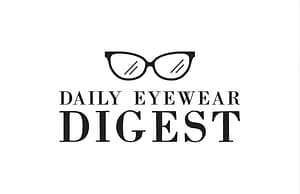Vision is a critical sense, essential for daily activities and overall quality of life. However, myths and misconceptions about eye health can lead to misguided practices and neglected eye care. This article aims to debunk some of the most common myths and provide reliable information to help you maintain optimal eye health.
Myth 1: Reading in Dim Light Damages Your Eyes
Origin of the Myth: This belief likely stems from the discomfort experienced when reading in low light. Parents and teachers often caution children against it, fearing long-term damage.
The Science Behind It: Reading in dim light does not cause permanent damage to your eyes. However, it can cause eye strain, leading to temporary discomfort, headaches, and difficulty focusing. It’s advisable to read in good lighting to avoid these issues, but rest assured, your eyes won’t suffer lasting harm from occasional low-light reading.
Myth 2: Sitting Too Close to the TV is Harmful
Historical Context: This myth dates back to the 1960s when televisions emitted higher levels of radiation. Parents warned children to keep their distance to avoid potential harm.
Current Understanding: Modern televisions are safe and emit negligible radiation. Sitting close to the TV does not damage your eyes, but it may cause temporary eye strain. Ensure your viewing distance is comfortable, and take regular breaks to rest your eyes.
Myth 3: Using Glasses or Contacts Weakens Eyes
Why This Myth Persists: People often believe that relying on corrective lenses will cause their eyes to become dependent and weaken over time.
Actual Impact on Vision: Glasses and contact lenses correct refractive errors, enabling clear vision. They do not alter the structure or strength of the eyes. Wearing the correct prescription improves vision quality and does not cause deterioration. Regular eye exams ensure your prescription remains accurate.
Myth 4: Eating Carrots Improves Vision
Carrots and Eye Health: Carrots are rich in beta-carotene, a precursor to vitamin A, which is essential for eye health. This nutrient helps maintain good vision, particularly in low-light conditions.
Nutritional Facts: While carrots contribute to overall eye health, they do not improve vision beyond what is normal. A balanced diet with a variety of fruits, vegetables, and nutrients supports eye health more effectively than relying solely on carrots.
Myth 5: Eye Exercises Can Correct Vision
Types of Eye Exercises: Various exercises claim to strengthen eye muscles and improve vision, such as focusing on distant objects or moving the eyes in specific patterns.
Effectiveness: There is little scientific evidence supporting the effectiveness of eye exercises in correcting vision problems like myopia, hyperopia, or astigmatism. These exercises might help reduce eye strain but won’t replace the need for corrective lenses or professional treatment.
Myth 6: Only Men Can Be Colorblind
Gender and Colorblindness: Colorblindness is more common in men, but women can also be affected. This condition is often inherited and linked to the X chromosome.
True Causes: Both men and women can inherit the genetic mutation causing colorblindness. Men are more frequently affected because they have only one X chromosome, while women have two, making it less likely for them to inherit the mutation on both.
Myth 7: Losing Vision is an Inevitable Part of Aging
Aging and Vision: While some age-related changes in vision are common, significant vision loss is not inevitable. Conditions like presbyopia (difficulty focusing on close objects) are natural, but many severe eye problems can be prevented or treated.
Preventative Measures: Regular eye exams, a healthy diet, protection from UV light, and managing chronic conditions like diabetes can help maintain good vision throughout life. Early detection and treatment of eye conditions are crucial.
Myth 8: Children Outgrow Needing Glasses
Pediatric Vision Care: Children’s vision can change as they grow, but they do not always outgrow the need for glasses. Refractive errors like myopia (nearsightedness) can progress during childhood and adolescence.
Long-term Eye Health: Regular eye exams for children are essential to monitor vision changes and adjust prescriptions as needed. Proper vision correction supports learning and development.
Myth 9: Contact Lenses Can Get Lost Behind the Eye
Anatomy of the Eye: The structure of the eye includes a thin membrane called the conjunctiva, which connects the eyelid to the eye, preventing anything from going behind the eye.
What Really Happens: Contact lenses can occasionally become displaced or stuck under the eyelid, but they cannot get lost behind the eye. Proper handling and care of contact lenses minimize the risk of such issues.
Myth 10: All Sunglasses Protect Equally from UV Rays
Quality of Sunglasses: Not all sunglasses offer the same level of UV protection. Some may block visible light but not harmful UV rays.
UV Protection Levels: When choosing sunglasses, look for those labeled as providing 100% UV protection or UV400. These block both UVA and UVB rays, protecting your eyes from potential damage.
Understanding Eye Health
Maintaining eye health requires a proactive approach. Regular check-ups, a balanced diet, and protective measures can significantly impact your vision quality and longevity.
Common Vision Problems
Vision problems can range from refractive errors to age-related conditions. Common issues include:
- Myopia (Nearsightedness): Difficulty seeing distant objects clearly.
- Hyperopia (Farsightedness): Difficulty seeing close objects clearly.
- Astigmatism: Distorted vision due to an irregularly shaped cornea.
- Presbyopia: Age-related difficulty in focusing on close objects.
Advancements in Eye Care Technology
Modern technology has revolutionized eye care, offering innovative treatments and solutions:
- LASIK: A popular laser surgery to correct refractive errors.
- Multifocal Lenses: Contact lenses that address multiple vision problems.
- Telemedicine: Remote consultations and monitoring for eye care.
Preventative Measures for Eye Health
To maintain good eye health, consider these preventative measures:
- Diet: Include foods rich in vitamins A, C, and E, zinc, and omega-3 fatty acids.
- Exercise: Regular physical activity promotes overall health, including eye health.
- Screen Time Management: Take breaks and use proper lighting to reduce eye strain.
Importance of Regular Eye Exams
Regular eye exams are crucial for early detection and management of eye conditions. Comprehensive exams can identify issues before they become serious and help maintain optimal vision.
Healthy Eye Habits for Daily Life
Incorporate these habits into your daily routine to protect your eyes:
- Screen Breaks: Follow the 20-20-20 rule: every 20 minutes, look at something 20 feet away for 20 seconds.
- Proper Lighting: Ensure adequate lighting to reduce eye strain.
- Hydration: Stay hydrated to prevent dry eyes.
Children’s Eye Health
Early screenings and proper management of screen time are vital for children’s eye health. Regular check-ups ensure any vision problems are detected and addressed early.
Protecting Your Eyes at Work
Workplace eye safety is essential, especially in environments with potential hazards:
- Ergonomics: Set up your workspace to reduce eye strain.
- Protective Gear: Use appropriate eye protection when necessary.
Myths vs. Facts: Quick Reference Guide
Here’s a quick summary of common myths and the facts to counter them:
- Myth: Reading in dim light damages eyes. Fact: It causes temporary strain, not permanent damage.
- Myth: Sitting close to the TV is harmful. Fact: It may cause eye strain but doesn’t damage vision.
- Myth: Glasses weaken eyes. Fact: They correct vision without weakening eyes.
- Myth: Eating carrots improves vision. Fact: Carrots support eye health but don’t enhance vision.
- Myth: Eye exercises correct vision. Fact: They can reduce strain but don’t fix refractive errors.
- Myth: Only men are colorblind. Fact: Women can also be colorblind, though it’s less common.
- Myth: Vision loss is inevitable with aging. Fact: Many age-related issues can be managed or prevented.
- Myth: Children outgrow glasses. Fact: Vision changes require regular monitoring and adjustment.
- Myth: Contacts can get lost behind the eye. Fact: The eye’s anatomy prevents this.
- Myth: All sunglasses protect equally from UV rays. Fact: Look for 100% UV protection.
FAQs
What causes eye strain? Eye strain is often caused by prolonged focus on screens, poor lighting, or uncorrected vision problems. Taking breaks and adjusting your environment can help reduce strain.
Can diet affect vision? Yes, a balanced diet rich in vitamins and minerals supports overall eye health and can help prevent certain conditions.
Is it necessary to wear sunglasses on cloudy days? UV rays can penetrate clouds, so wearing sunglasses with UV protection is important even on overcast days.
How often should I get my eyes checked? Adults should have a comprehensive eye exam every 1-2 years, or as recommended by an eye care professional.
Can children develop serious eye problems? Yes, children can develop various eye conditions. Regular screenings help detect and treat issues early.
Are there exercises to improve vision naturally? While some exercises can reduce eye strain, they do not correct vision problems. Proper eyewear and regular check-ups are essential.
Conclusion
Understanding the facts about vision and eye health is crucial for maintaining good eyesight throughout your life. By debunking these common myths, we hope to encourage better eye care practices and awareness. Remember to schedule regular eye exams, protect your eyes from harmful UV rays, and follow healthy habits to ensure your vision stays sharp and clear.

